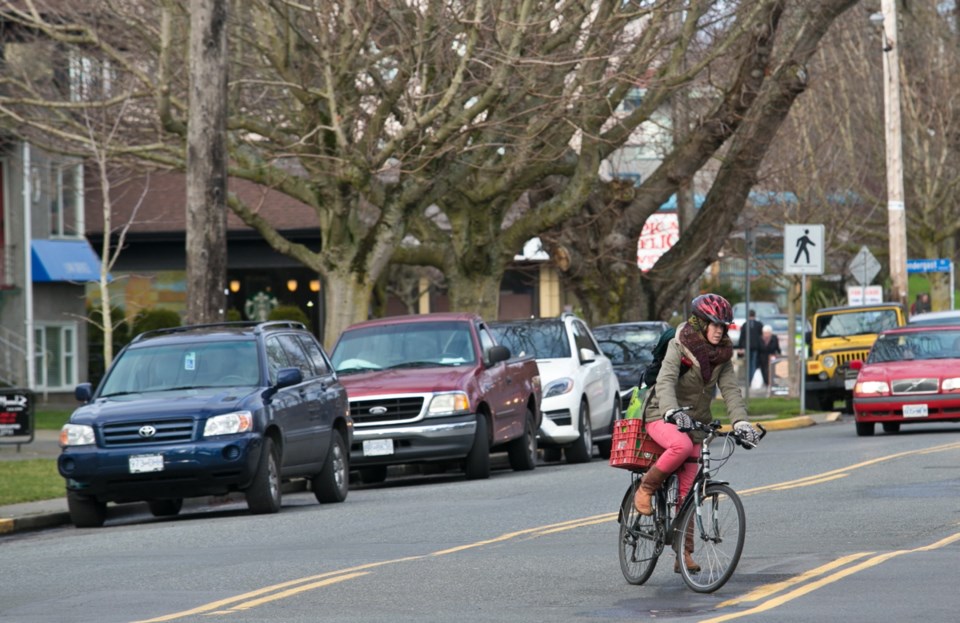Victoria shouldn’t abandon plans to build bike lanes through Cook Street Village, says Coun. Ben Isitt.
“I don’t think council wants to retreat from including bike lanes or some sort of safe cycling amenity right through the heart of the village,” Isitt said.
Isitt made the comments while councillors were discussing an application for extended operating hours by the Beagle Pub, which wanted a 9 a.m. opening on Saturdays and Sundays instead of its current 11 a.m. opening.
Council endorsed the change in hours, which left Isitt wondering about potential impacts on parking on Cook Street.
The draft Fairfield neighbourhood plan calls for a “shared street” approach for the village, where motor traffic is slowed sufficiently that the street is safe for cyclists and pedestrians.
“I’d like to see how this shared route thing will work,” Isitt said in a later interview. “I’m somewhat skeptical whether it would be safe enough for children or some senior citizens to feel safe cycling. So I don’t want to abandon the option of safe bike lanes through the village.”
Mayor Lisa Helps agreed that Cook is a good bike route but said at this point, the path of least resistance is along Vancouver Street.
“[Cook Street] is nice and flat and all of those things, but also, if we’re trying to get the rest of the network built in the next 3 1/2 years, we need to be pragmatic and there was stronger community support and stronger engineering support in terms of traffic volumes, retention of trees and all of those things to put the route currently along Vancouver Street,” Helps said.
Isitt favours removing Cook’s centre turn lane to provide enough space for protected bike lanes and notes that the city spent $300,000 on consultants to help them chart the original bike network, and they recommended Cook Street.
“So we’d go from five lanes of traffic being devoted to cars — which is currently the case — to four lanes. So there’d be two lanes for through traffic, two lanes for parking and, basically, with one lane, you can fit two bike lanes on it.”
The city’s cycling master plan identifies Cook Street as a cycling route, he said.
Isitt said he’s not planning to introduce any motions at this point to have council reconsider the Vancouver Street bike route.
There is no doubt there will be bike lanes on Cook Street in the future, as individually owned cars give way to car sharing and other modes of transportation, Helps said. “Eventually, in the future there will be a great bike lane down Cook Street, but I think at this point … the path of least resistance in order to get the most accomplished in the shortest time [is Vancouver].”
The idea of running bike lanes along Cook has always faced strong opposition.
The route was preferred by cyclists because of its gentle topography and direct access to both Cook Street and North Park villages.
But Cook Street merchants worried about the loss of parking and loading zones and predicted a traffic nightmare if cycling lanes are added to the street.
Some residents complained the loss of Cook Street parking would put additional pressure on already limited parking on side streets.
A year ago, city staff recommended shifting the bike route over a block to Vancouver Street — a move they said would save money, protect trees and prevent traffic backups at intersections such as Pandora and Johnson streets.
The previous council agreed and planning for the Vancouver route is underway.
While there will be some separated bike lanes on parts of Vancouver, there will also be sections, such as between Fort and Southgate, where the goal is a shared roadway, making it safer for cyclists of all ages by reducing motor traffic to about 1,000 vehicles a day from the current 5,100.



